- What is the primer?
- Selection of primers for different surfaces during repairs
- The adhesive primer and firming
- Requirements for primers
- acrylic a mist
- glyptal a mist
- perchlorovinyl a mist
- polivinilatsetatnaja a mist
- phenolic a mist
- polystyrene primer
- Basic rules for the use of primers
- priming
- The wash primer
Priming substrates before application of the plaster, or other coating, It is of great importance in the process of construction and interior decoration. The main purpose of applying the primer formulations and their purpose is to increase the adhesion surface of the base, followed by, imposed on him layers of decorative finish. Plaster, paint, tile adhesive, applied to the not-treated with a mixture of surface primer, with can flake off or covered with cracks over time, as the brick, concrete and wood surfaces have high absorbing properties. Thus, quite naturally the question arises - how to choose the primer the repair of the apartment and for any surface which is better suited?
What is the primer?
Mixtures of primers on treated surface is easier to apply paint, decorative plaster, various adhesives and mastics, and are part of the primers antiseptic components protect the surface from occurrence of mold. Currently, there is a fairly large selection of primer mixtures, or as they are called spetsgruntovok, for a variety of surfaces and a variety of purposes, their properties and components, within their composition they are divided into several categories:. Depending on the type of premises and a coating applied to the planned primed surface is necessary to choose an appropriate primer coating.
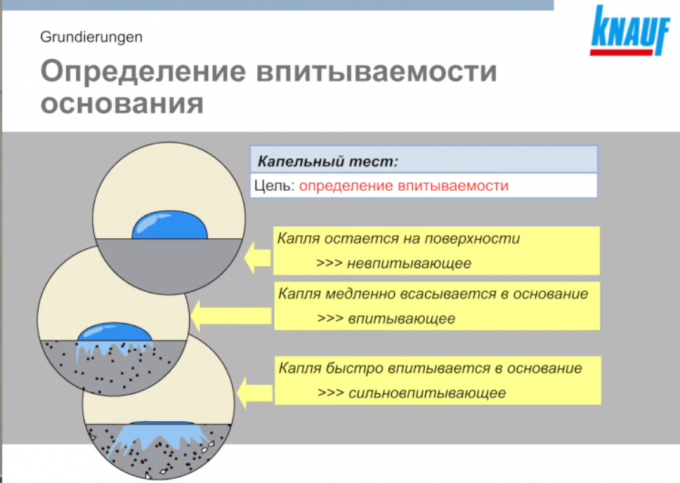
Wrong choice of primer mixture may entail additional costs for the repair of premises, and the use of primers, It is not intended to cover the inner surfaces of dwellings, can cause serious harm to health. Priming liquid mixtures are homogeneous mass, It composed of the polymer components and various fillers and applied only as the first coating layer under other materials. In view of the, that the primers do not have decorative properties, they have never been used in facial decoration. That's understood, What is the primer, go ahead.
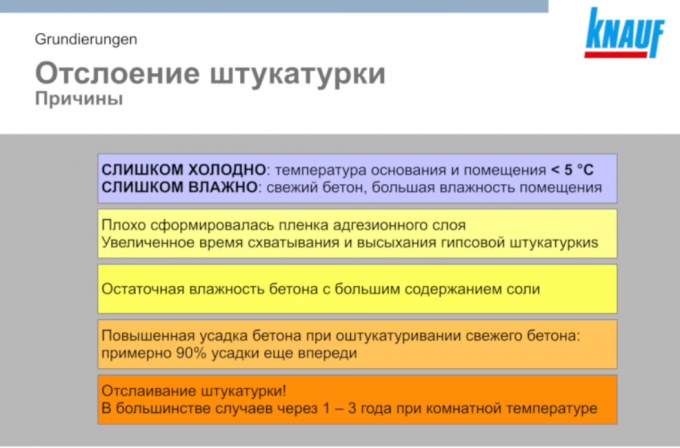
Selection of primers for different surfaces during repairs
When repairing or finishing of the premises is necessary to understand, What is the primer. There are several reasons, Why do we need a primer when painting and decorating.
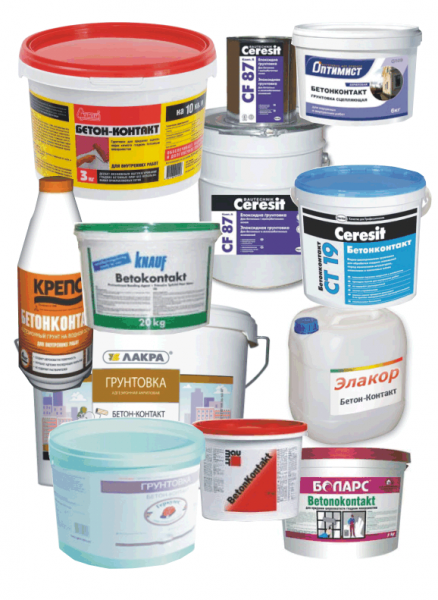
When carrying out putty, painting walls, Wall cladding with tiles must first be primed surface for better interaction, adhesion of the base and coating material. Also, due to the primer is a more uniform distribution and absorption of paint, putty, adhesive wallpaper. The cost of primer and works on drawing mainly low, but can improve the strength and durability of coats finish.
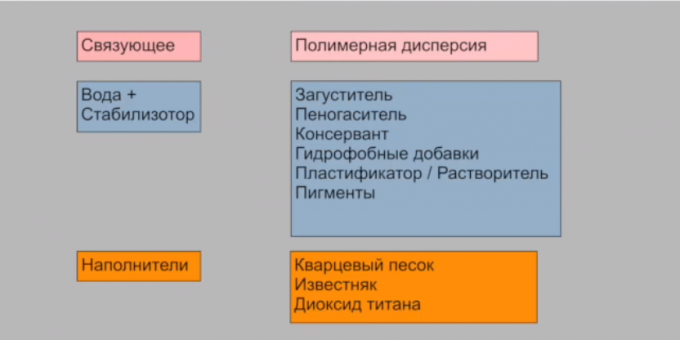
So underestimate the need for priming surfaces can not be. There is a wide variety of primers: both universal, and intended for specific bases.
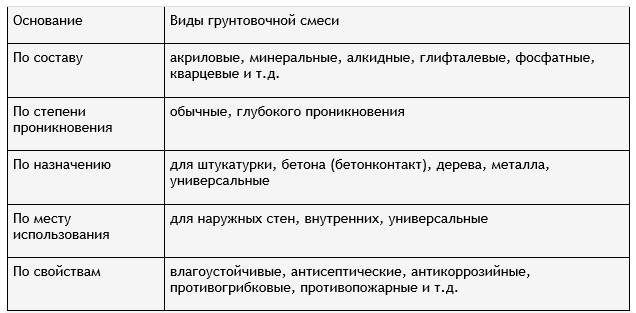
For what primer is needed in the repair of surfaces? Basically primer used for primary training grounds, to improve the adhesion between the surface layer and applied (between the wall and plaster, between the plaster and putty, between the filler and paint, etc.. d.). As well as for modifying and improving the surface properties: reduction vlagovpityvaemosti for porous surfaces, improve the absorption for dense surfaces, prevention of mold and mildew in damp surfaces for smokers, protection against damaging factors (corrosion, rotting and so. d.), drying accelerators, etc.. d.
What is the primer:
- For porous surfaces (aerated, Styrofoam, brick, plaster) primer is applied to reinforce the surface and to reduce the absorption of glue or putty applied to the material. T. it is. to improve the adhesion characteristics. For such deep penetration surfaces apply primer, which create a special film, preventing loss of moisture from the filler, glue or other finishing materials, and therefore prevent the loss of bonding properties. (for example, primer Ceresit CT14, ST17, ST17 super).
- For solid concrete surfaces, which are dense and vice versa do not absorb moisture, primer applied on a mineral base with cement as a binder. For example «Knauf« Betokontakt. To improve adhesion and a base e.g., plaster.
- For priming wooden surfaces are used to protect wood from rotting, improve adhesion to the color or varnish, reduce absorption, which reduces the consumption of material for finishing. There is also a special antiseptic primer, protecting wooden structures from insects, rotting and so. d. Basically antiseptics are used for construction of wooden roofs, floors, which are not subject to further finish. For example primer antiseptic Pinotex-Base.
- For surfaces in humid (showers, bathrooms, sauna room, etc.. d.) used to create a moisture barrier, to prevent the penetration of moisture inside the base. Also, the primer should prevent the occurrence of condensation and mold (eg, deep penetrating primer with antiseptkom "Polymines" AC-5a)
- To remove mold, mikrooragnizamov. When, if it is necessary to clean the surface inside or outside the building, which has long been the floor moisture, and it formed the mold, fungus, moss, etc.. d., First we need to install and remove the source of the formation of excess moisture, and then mechanically (without water) repair the damage and treat with a special primer and leave 8-10 hours. (for example, primer Ceresit CT99).
- For metal surfaces: For metals such as steel, cast iron (black metal) primers are used for improving adhesion, and for corrosion protection. For this purpose alkyd primer containing zinc. (for example, GF-021). When, if the surface is already rust. For ferrous metals are used so-called "rust converters", that will stop the process of destruction, and converted into rust protective coating. If the galvanized steel must be painted sheets, aluminum products (non-ferrous metals) Surface preparation is applied primer for non-ferrous metals.
These positions generally explain what is needed priming surfaces. The use of a primer is important in any process of lining, warming, decoration. This simple process will allow to perform the process in a professional manner and make it quality.
The adhesive primer and firming
Regardless of their water-repellent functions Priming compositions are adhesive and restorative. In the first case, the primer promotes better skhatyvaemosti with the surface finishing materials.

For example, in the case of using the bathroom in the pre-plastered wall, the primer will allow the tile more strongly to grips with the base. In this case, the role of waterproofing will perform not only a primer, but also the ceramic tile, having a low coefficient of moisture absorption.
Firming same primer is typically used in processing friable surfaces. And as usual plastered walls and aligned inside the premises, such works are all rational conduct outside - before finishing the walls with the same decorative facade plaster.
The hydrophobic coating - excellent insulation means
In this way, primer hydrophobic treatment takes place, in outdoor applications, and in interior decoration with high humidity, or the greater the chance of leaks - in the bathroom or laundry room, as well as in the kitchen. In this case, this kind of primer in combination with other insulating components makes it possible to create a kind of gidrobarer, guaranteeing the protection of premises located below flooding. So, over the primer impregnated concrete slabs are usually laid waterproofing material, and only then comes the installation of the concrete screed and finishing floor finishing, such, as a tile.
aerated concrete wall without appropriate treatments have disadvantages: low resistance to pressure and wrinkling, scratching and chipping face surface; high hygroscopicity - the ability to absorb and retain water, and in such a water-saturated state to reduce almost to a minimum quality of its thermal protection and sound insulation.
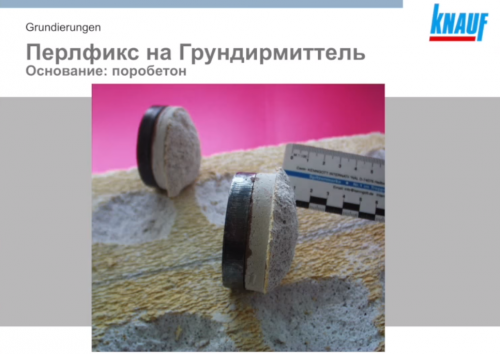
For, aerated concrete help to develop their property as best as possible and get rid of the disadvantages, design thereof requires primed by coating and impregnating compositions such special Grunadirmittel from firm Knauf, creating a leveling and smoothing the protective layer up to several millimeters thick, allowing to carry out finishing work - plastering, facing, Wallpaper and other.
Requirements for primers
Typically they are liquid polymeric emulsions or dispersions of, that after the distribution of aerated concrete blocks at the end of the setting (or polymerization) changing the quality of the outer surface, receiving: hydrophobic properties (ceases to absorb water); water vapor permeability (It allows the moisture-laden air to migrate through the permeable layer from the room beyond it through the exterior walls, avoiding the formation and accumulation of condensation water within the block); biological protection (antiseptic components prevent subsequent formation of the fungus, mold, proliferation of harmful microorganisms); adhesive properties (to reliably hold on himself plaster and other similar types of finishing, both in liquid form, and in grasping the operational status to a solid). The preferred prime the best way to use the most common brand:
Knauf primer. One of the best primers deep penetration. To adjust to the operation condition is diluted in the ratio 1 to 3. Available in 15 pound containers, consumption - about 300 d of 1 m2.
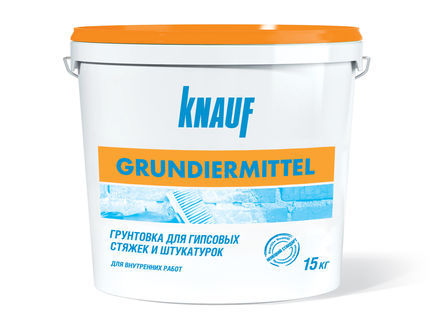
Volma-Universal. The composition of the deep penetration, often used for, to be primed before plastering aerated concrete to increase adhesion and hardening, suitable for indoor and outdoor application. Poured into a 10-liter container of ready-to-eat. Consumption - up 150 ml of 1 quarter. meter.
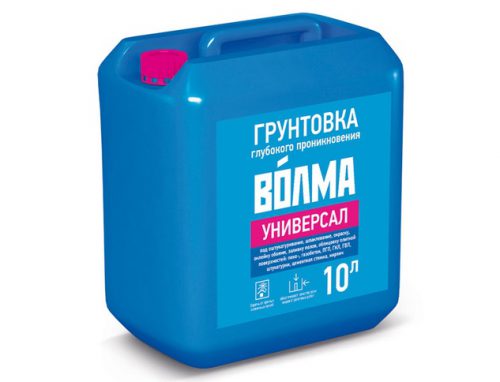
Tex-Profi. It is intended only for internal application. One liter of the prepared solution can be treated to 15 m2. It is sold as a concentrate, diluted with water in a proportion of 1 to 3, in plastic bottles 0,9 GoatMeat kg Stock jerry 9 kg. 5. guardians. Emulsion deep penetration, good effect on the pore structure, solidifying surface, on which you can then apply the plaster. Consumption - up 200 ml of 1 quarter. meter, It is available in ready to use in 10-liter plastic cans.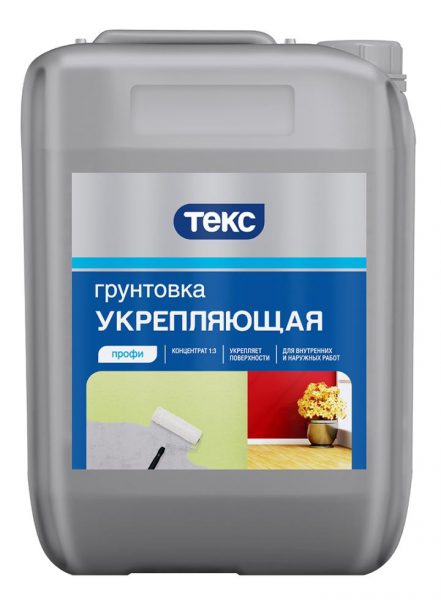
types of primers, specifications formulations
designed, mainly for covering wooden surfaces, for the subsequent application to them a wide variety of finishing coats, including cement mortar lining. Due to processing wood base alkyd primer surface of the wood gets exfoliated structure, thereby increasing its "adhesiveness", followed by, coating applied to it. Complete drying time of alkyd primers at + 25 ° C is 10 – 15 hours. Alkyd primer suitable for the treatment of residential surfaces.
acrylic a mist
It has a high penetration ability and is considered a universal primer. It is used for treatment of almost all types of surfaces, such as wood, Concrete, Chipboard or plaster, both old, and fresh. She also great for treating porous and very friable (eg, old plaster) surfaces. Penetrating deeply into the pores, acrylic primer greatly increases the adhesion of the porous surface. The only exceptions are the metal surfaces, because after some time they may cause rust stains. The drying time of this type of primers is not more than 5 hours, also worth noting, acrylic primer that is practically odorless.
glyptal a mist
It is intended for surface treatment in dry conditions, as well as for application to the metal surface as a first layer. Priming Gliphtal mixture completely dry at room temperature for one day.
perchlorovinyl a mist
As well as acrylic primer, It can be used to cover all surfaces including metal, however it is necessary to take into account that to use this kind of primer to the internal living areas, because of its increased toxicity of the components included in its composition, must not. Perchlorovinyl primer dries not more than 1 time.
polivinilatsetatnaja a mist
Synthetic primer mixture, consisting of latex or polyvinyl acetate dispersion. Normally used only for surface preparation for further coating paints PVA. Complete drying time of the primer from 15 to 30 minutes.
phenolic a mist
It is used for priming of wooden like, and metal surfaces as the first layer. As well as polyvinyl-primer it is not recommended for use in domestic and residential areas. Dry phenolic primer on average 10 to 15 hours.
polystyrene primer
Most commonly used for priming wood or plaster surfaces. However, this type of ground cover can not be used in residential areas, since they contain highly toxic solvents. The drying time of the primer, refer to the description of the application.
Basic rules for the use of primers
To ensure high efficiency of the primer is necessary to observe certain rules and requirements for its use:
You can not acquire a primer with expired or expiring shelf life, since the quality of the solution is reduced.
Before applying the primer treated surface should be prepared, that includes her clean, eliminating blistering and peeling of old coatings and plasters, deepening and widening of the cracks formed.
When applying roller primer, brush or spray is necessary to observe uniformity of application, without missing the front and end portions.
With rapid and strong solution soaking the treated surface must apply a second primer layer after drying of the first layer.
After application of the primer to give her time to complete drying, the duration of which depends on the composition of the primer and external conditions, room humidity and temperature.
homeowners should keep in mind inexperienced repairs, that the use of a primer is always better, than to ignore it. Here the principle of "porridge butter will not spoil", and the quality of finishing with it only increases.
priming
As use tools usually chosen roller for high processing speed, or brush, if you have to cover the difficult parts or small surfaces.
Important! When applying the composition is very important not to leave untreated areas, because otherwise all measures for waterproofing will be meaningless. With special care must be processed joints.
- Furthermore the liquid compositions can be applied even spray, well, more dense - the usual spread with a spatula. Typically, the latter method of application concerns mineral primer;
- In general, the rules in this case, the training standard - joints must be sealed, the surface is thoroughly cleaned and, if necessary, degrease. Since fat is not necessarily the place to be seen, necessary as prophylaxis walk acetone or white spirit of the entire surface to be treated;
- When decorating the walls or floor tiles, in the adhesive composition can be added to improve its water-repellent properties. But the hydrophobic impregnation there should be no more than 4 percent of total, so as not to reduce the possibility of fastening adhesive;
- In the process of applying the composition of the first layer is absorbed into the material almost completely, therefore it is necessary to apply a second, and sometimes third layer;
Continue finishing work must be not less than, than a half of a day from the application of the last layer of primer, as it is now required on the, the composition of the acquired their hydrophobic qualities; - Temperature, in which the work must be carried out, must be at least 5, but no more than 25 degrees Celsius. High humidity also does not contribute to the effectiveness of coating composition. Storage primer should not be carried out at a temperature above 30 degrees;
- The paper should use clothing or other means of individual protection;
Sometimes a primer is in a frozen state. And should just leave part of the room for some time for its defrosting. Heated composition is contraindicated.
The wash primer
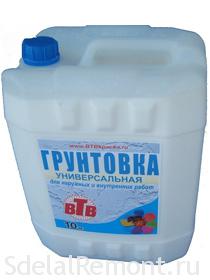 If you get dirty and it did not know what to wash primer or clear tool, in most cases, will help Mr Muscle Window, Silit for toilets and Abrasive Brush. If the soiled tiles and nothing helps, you will have to go to a specialized hardware store and look for modern means. You can try it yet:
If you get dirty and it did not know what to wash primer or clear tool, in most cases, will help Mr Muscle Window, Silit for toilets and Abrasive Brush. If the soiled tiles and nothing helps, you will have to go to a specialized hardware store and look for modern means. You can try it yet:
- Keep the spot several hours the covered wet rags. The primer is a little swollen and easily separated.
- Solvents - petrol, acetone, Skipidar, 646, 647, toluene, acetate.
- If the acid-resistant glaze - household acidic cleaners plumbing.
- Well suited concentrated vinegar - essence (Only work in the mask or in a professional painter's mask with a good filter, and you can easily burn the lungs).
The main thing - do not debug this procedure, and then it will be even more difficult to scrub, When the primer is dry well. Now that you know how to choose the primer, why it is needed, what are the types and specifications, how dry and how to wash it when not handled with care and in contact with the surface.
Video on the specifics of the use of a primer













And we found a way purely by chance than to wash acrylic primer. Washed tiles of putty, and otmylas primer Italian means Viakal, with a pink sticker (we still have a green, but it is not yet used), a means for washing the tiles, plumbing. Pshikat this foam, sponge smeared, We are waiting for minutes 20, and priming even fingernail torn off. Prior to this tried and acetone, and the solvent 647, and alcohol- did not help.